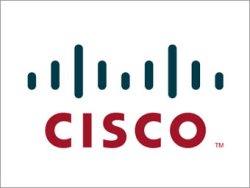Cisco Systems continues to be the dominant player in the increasingly competitive router space, and executives are looking to push that advantage in 2012 by extending the solutions strategy they say is the company’s key differentiator.
Over the past year-plus, Cisco has aggressively brought services – such as security and collaboration – onto its Integrated Service Routers (ISRs) to give customers more of a solution than simply a networking router, according to Praveen Akkiraju, senior vice president and general manager of Cisco’s Services Routing Technology Group.
“The ISR is now a services platform,” Akkiraju said in a recent interview with eWEEK. “Our customers use platforms.”
Customer connections
Cisco wants to use its solutions strategy, wide data centre footprint and dominant position in the $873 million (£556m) enterprise router market – the vendor holds 84 percent of the access router space and 52 percent of the high-end router market, according to market research firm Dell’Oro Group – to help enterprises connect to cloud computing environments easily and quickly and take advantage of their software-as-a-service (SaaS) capabilities, he said.
 Sometime within the next few months, Cisco will launch what Akkiraju said will be a solution that will include not only Cisco ISRs and ASRs (Aggregation Services Routers), but also WAN optimisation technology. He said it is a solution set that makes connecting to the cloud and provisioning workloads easy.
Sometime within the next few months, Cisco will launch what Akkiraju said will be a solution that will include not only Cisco ISRs and ASRs (Aggregation Services Routers), but also WAN optimisation technology. He said it is a solution set that makes connecting to the cloud and provisioning workloads easy.
At the same time, enterprises will be able to use the offering in any number of ways, he said. Because the solution comprises products Cisco already sells, businesses will be able to use it in a traditional data centre fashion or in private or hybrid cloud environments.
In its Unified Computing System (UCS), Cisco already has an infrastructure-as-a-service (IaaS) platform for cloud computing environments, Akkiraju said. The UCS, introduced in 2009, includes not only Cisco networking and server technology, but also virtualisation capabilities from VMware and storage technology from EMC.
The company this month announced that in less than three years, there are now more than 10,000 UCS customers, and the Intel-based converged data centre solution has made Cisco a significant player in the competitive x86 server space against the likes of Hewlett-Packard and Dell.
Akkiraju said the upcoming router solution is a natural next step for Cisco in offering solutions to enable enterprise customers to take advantage of the cloud. He declined to go into great details about what Cisco will be launching but gave the example of a branch office that is connected to the cloud via its ISR. The ISR will be able to recognise traffic coming into the branch from the cloud, move it through Cisco’s ScanSafe security offering and send it to its destination.
“It’s moved first to ScanSafe before it’s moved between the enterprise and cloud,” he said.
Akkiraju said that while the new offering will be attractive to enterprises, SMBS also will be able to use the technology. Smaller businesses are anxious to take advantage of what cloud computing can offer, and many times they will not be bogged down like some of their brethren by having to deal with technology that is already in place, he said.
“They don’t have a lot of legacy infrastructure,” he said.




